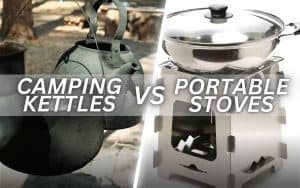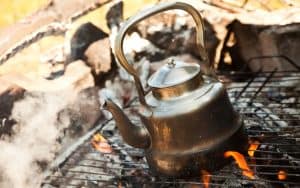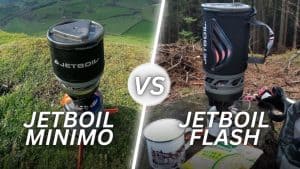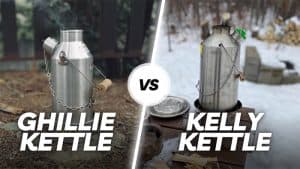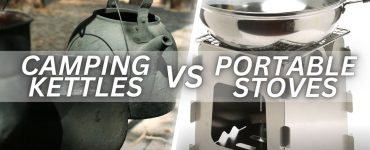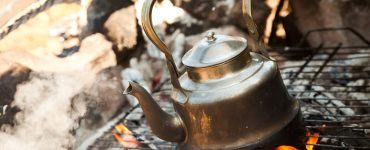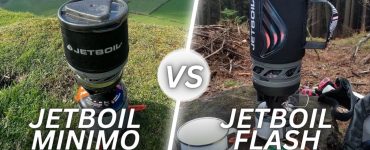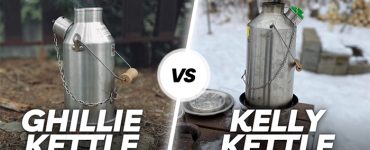Camping is a popular outdoor activity enjoyed by many people around the world. Whether you’re going on a solo adventure or camping with a group, having the right equipment is essential for a successful trip. One of the most important pieces of gear you’ll need is a camping kettle.
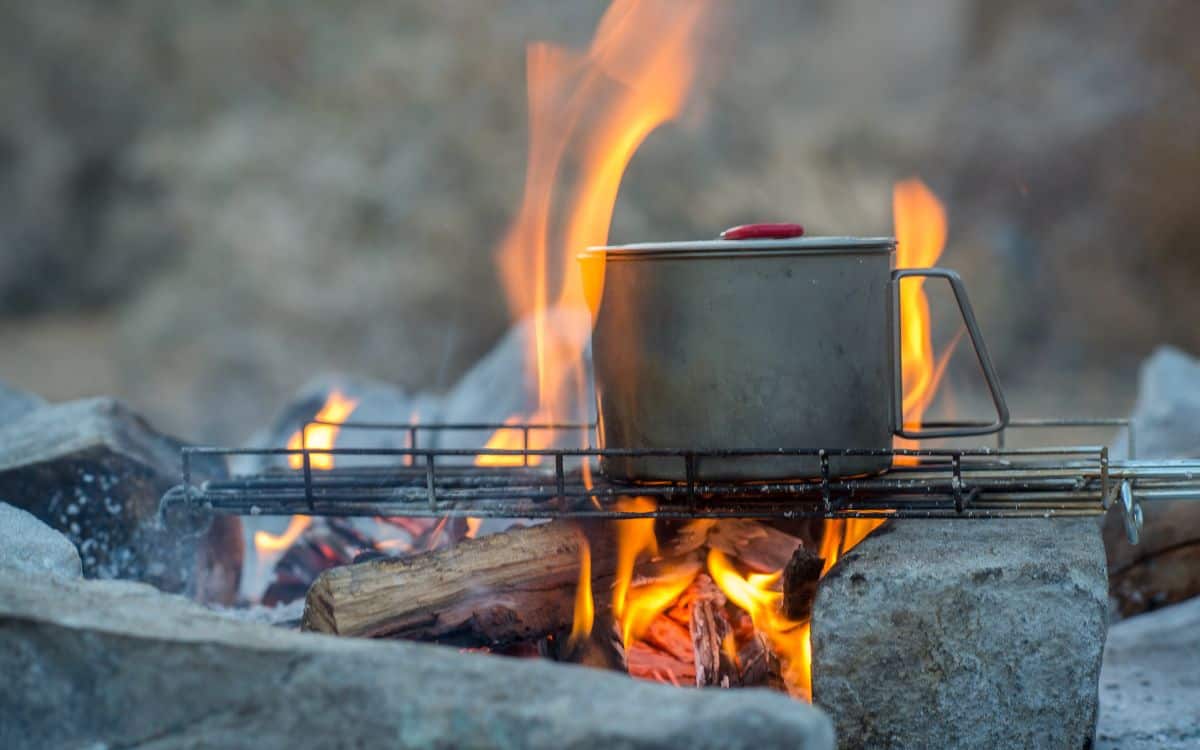
With so many options on the market, choosing the right camping kettle can be a daunting task. In this blog post, we’ll provide you with a guide to help you choose the right camping kettle for your needs. We’ll cover factors such as size and capacity, material, heat source compatibility, spout and lid design, and handle and grip. By the end of this guide, you’ll be equipped with the knowledge to choose the best camping kettle for your next adventure.
Size and Capacity
When it comes to choosing a camping kettle, size and capacity are important factors to consider. Camping kettles come in a range of sizes, from small 0.5L kettles to larger 2L or 3L kettles. The right size for you will depend on your needs and the size of your camping group.
For solo camping trips, a smaller kettle with a capacity of around 0.5L to 1L is usually sufficient. These kettles are lightweight and take up less space in your camping gear, making them convenient for backpacking trips. However, if you’re camping with a group, you’ll need a larger kettle with a capacity of at least 1.5L or 2L. This will allow you to boil enough water for everyone in your group to make tea or coffee in the morning.
It’s also important to consider the size and weight of your camping stove or heat source. A larger kettle may not fit on a small stove, so make sure to choose a kettle that is compatible with your heat source.
Material
The material of your camping kettle is an important factor to consider, as it can impact the durability, weight, and heat distribution of the kettle.
Stainless steel is a popular material choice for camping kettles due to its durability and resistance to rust and corrosion. Stainless steel kettles are also relatively lightweight and affordable. However, they can take longer to heat up and may not distribute heat as evenly as other materials.
Aluminum is another popular material choice for camping kettles. It’s lightweight, affordable, and heats up quickly. However, aluminum kettles are not as durable as stainless steel and may dent or scratch easily. They are also not recommended for use with acidic liquids as the acid can react with the metal.
Titanium is a lightweight and durable material that is becoming increasingly popular for camping kettles. It heats up quickly and distributes heat evenly, making it a great choice for camping. However, titanium kettles tend to be more expensive than stainless steel or aluminum kettles.
Fun Outdoor Quiz
Heat Source Compatibility
When choosing a camping kettle, it’s important to consider the heat source you’ll be using to boil water. Different kettles are compatible with different heat sources, so it’s important to choose one that will work well with your preferred method of heating water.
Gas stoves are a popular choice for camping, and many camping kettles are designed to work with them. Look for a kettle with a flat bottom that will sit securely on your stove’s grate.
If you plan to use a campfire to heat your water, look for a camping kettle with a long handle that will allow you to suspend the kettle over the fire. Some kettles also come with a specialized base that can be placed directly on hot coals.
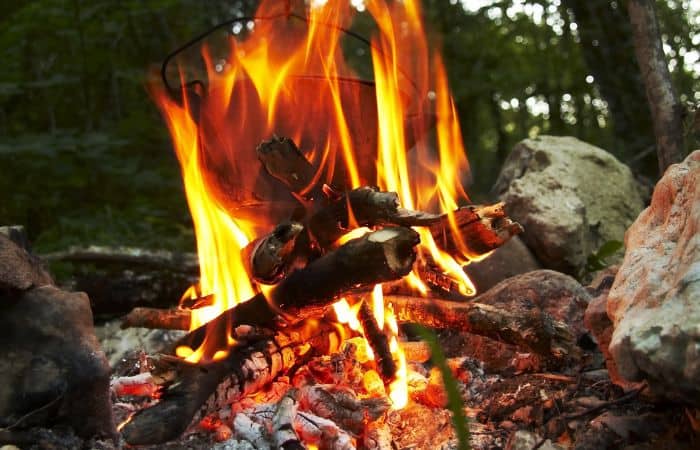
Electric kettles are also an option for camping if you have access to electricity. Look for a kettle with a detachable cord and a compact design that will be easy to transport.
It’s important to choose a camping kettle that is compatible with your heat source to ensure that it heats up quickly and efficiently. Make sure to read the manufacturer’s instructions and any warnings before using your kettle with a particular heat source.
Spout and Lid
The design of the spout and lid of your camping kettle can impact its functionality and ease of use. When choosing a camping kettle, consider the following:
Spout Design
Look for a camping kettle with a well-designed spout that allows for easy pouring without spills or drips. A spout that is too narrow or too wide can make pouring difficult, so look for a spout that is just the right size. A spout that is designed to be a whistle is also a useful feature, as it will alert you when the water has reached boiling point.
Lid Design
The lid of your camping kettle should fit snugly to prevent spills and retain heat. Look for a lid with a heat-resistant handle that will allow you to remove the lid without burning your fingers. Some kettles also come with a lid that doubles as a cup, which can be a useful feature for solo camping trips.
Overall, the spout and lid design of your camping kettle should be functional, easy to use, and well-designed to prevent spills and retain heat. Consider these factors when choosing your camping kettle to ensure a hassle-free camping experience.
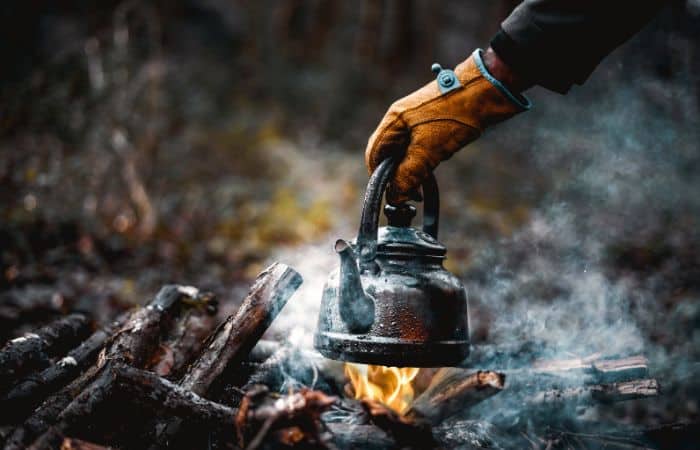
Handle and Grip
The handle and grip of your camping kettle are important factors to consider, as they can impact your ability to safely and comfortably carry and pour boiling water.
Handle Design
Look for a camping kettle with a sturdy and comfortable handle that is well-attached to the kettle. A handle that is too short or too thin can make carrying the kettle difficult, while a handle that is too long can make the kettle top-heavy and prone to tipping over.
Grip Design
The grip of your camping kettle should be comfortable and secure to prevent slips or accidents. Look for a camping kettle with a textured grip or a rubberized handle that will provide a secure grip, even when your hands are wet.
It’s also important to consider the weight of the kettle when choosing the handle and grip design. A heavier kettle may require a more ergonomic grip or a wider handle to prevent discomfort or strain.
Is There a Difference Between a Camping Kettle and A Regular Kettle?
Yes, there is a difference between a camping kettle and a regular kettle. A camping kettle is specifically designed to be used outdoors and is often more rugged and durable than a regular kettle. Camping kettles are typically made from materials that can withstand the elements, such as stainless steel or aluminum, and are designed to be lightweight and compact for easy transport. They may also have features such as heat-resistant handles, whistle spouts, and a lid that doubles as a cup, which make them more functional and practical for outdoor use.
In contrast, a regular kettle is designed for indoor use and may not be as durable or portable as a camping kettle. It’s important to choose a camping kettle that is specifically designed for outdoor use to ensure that it can withstand the rigors of camping and provide hot water for cooking, cleaning, and drinking.
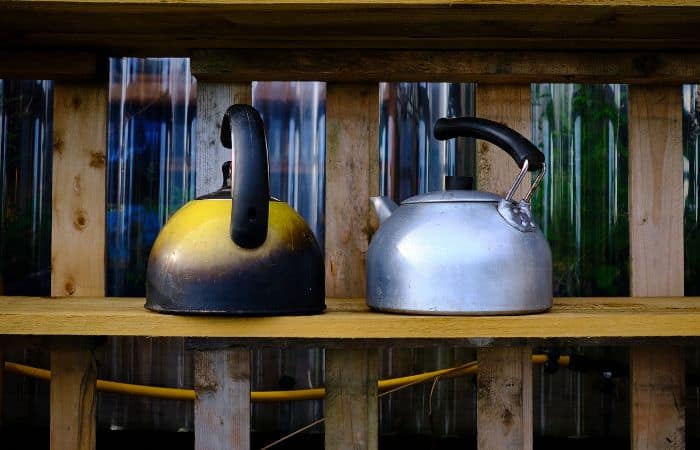
Can I Use a Camping Kettle for Things Other than Boiling Water?
Yes, you can use a camping kettle for things other than boiling water. Many camping kettles can be used to cook simple meals, such as soups, stews, and oatmeal. Some camping kettles even come with accessories, such as steamer inserts or frying pans, that allow you to cook a wider variety of meals.
However, it’s important to note that not all camping kettles are designed for cooking, and some may not be suitable for use with certain types of food. It’s important to check the manufacturer’s recommendations before using your camping kettle for cooking, and to clean it thoroughly after each use.
Conclusion
Choosing the right camping kettle can greatly enhance your outdoor experience, providing you with hot water for cooking, cleaning, and warming up. When selecting a camping kettle, it’s important to consider factors such as size and capacity, material, heat source compatibility, spout and lid design, and handle and grip.
By considering these factors, you can ensure that your camping kettle is functional, durable, and easy to use. Whether you’re a seasoned camper or a first-time adventurer, investing in the right camping kettle can make all the difference in your outdoor cooking and camping experience.


